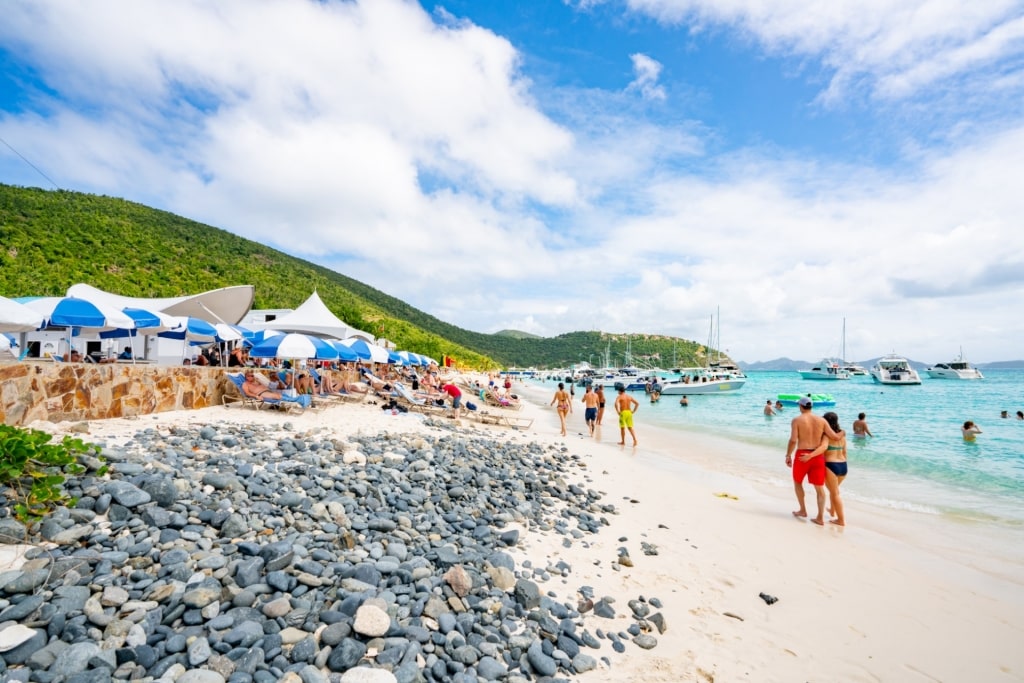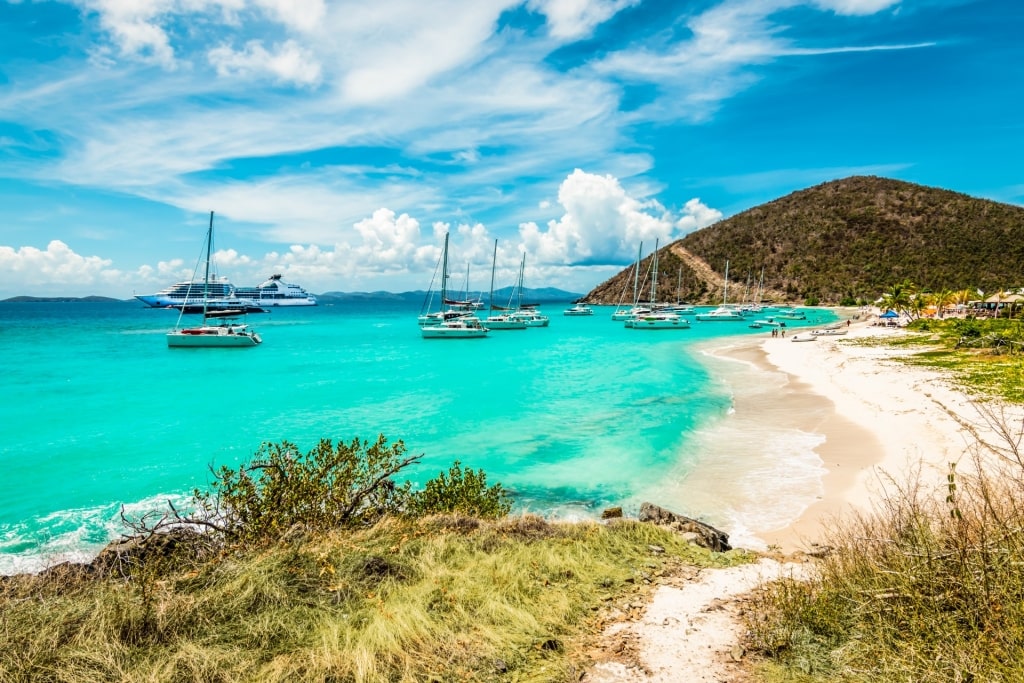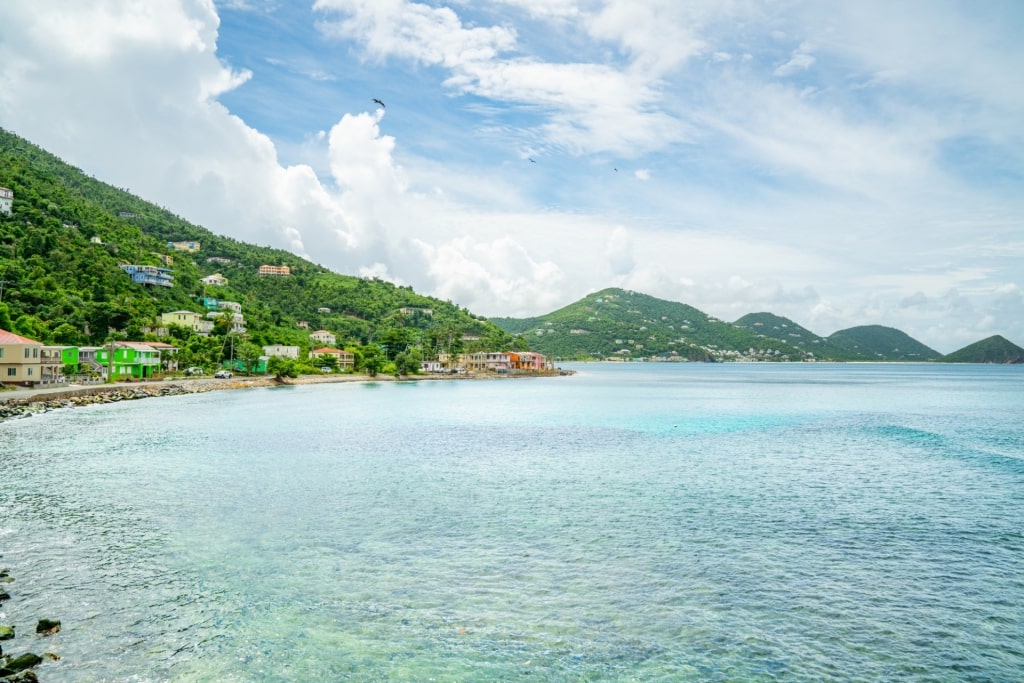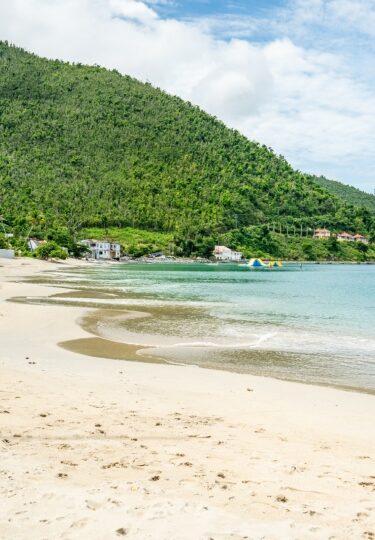The best time to visit the British Virgin Islands is winter and spring, from December to April. This is a time of warm, sunny weather, less rainfall, and lower humidity. The shoulder season months of May, June, October, and November are also a great time to visit, with pleasant weather and just a little more rain in June and the fall months.
Lying to the east of Puerto Rico, the British Virgin Islands, or BVI, are part of the Virgin Islands chain. The BVI enjoys a tropical climate tempered by tradewinds. The islands are famed for their beautiful beaches, world-class scuba diving, and sailing.
Visiting the British Virgin Islands by Season
Summer

Beach in Tortola
Summer, from June to August, is a time of hot, humid weather. Temperatures average 84.9°F (29.4°C) and the amount of rainfall increases month by month. In July, on average, expect 3.3 inches (85mm) of rain, increasing to 4.3 inches (110mm) by August. Short, sharp showers tend to fall in the late afternoon.
If you’re a diver—and the BVI is one of the best destinations in the Caribbean for diving—it’s best to avoid the summer months as visibility underwater is better at other times of year.
On the other hand, if you’re interested in local culture, the Emancipation Festival in Tortola in August is a great event to attend, which is a colorful carnival celebrating the emancipation of slaves. The festivities last two weeks, with live bands, food stalls, parades, and horse racing.
Fall
September, October, and November in the BVI are hot, humid months. If you don’t mind the heat, you’ll find fewer crowds around this time. Expect average daily highs of 83.9°F (28.9°C), and increased rainfall. September and October are the wettest months, receiving an average of 5.7 inches (145mm) each.
November is less rainy, with an average of 13 inches (130mm) of rainfall. This is arguably the best time to visit the BVI, in the lull before the high season—especially if you want to get away over Thanksgiving.
Read: Best Beaches to Visit in November
Winter
December, January, and February are peak season in the British Virgin Islands, as with the rest of the Caribbean. There’s less humidity and less chance of rainfall. The BVI is home to some of the best beaches to visit in February as it is one of the driest months of the year, with just two inches (50mm) of rain. Average daily highs are a balmy 79.5°F (26.4°C).
Expect clear skies and cooling breezes during these months. If you’re traveling over New Year’s, the parties in the bars on Jost Van Dyke are famed throughout the region.

Jost Van Dyke
Spring
March and April are some of the best times to visit the BVI, and the islands will be busy around Easter and Spring Break. Expect daily highs of 81.5°F (27.5°C) in April, increasing to 82.4°F (28°C) in May.
Late March to early April is the time of the BVI Spring Regatta, when sailors flock to the islands for yacht races and parties, making for a great atmosphere. Spring is a great time for diving, too, with excellent visibility.
By May, shoulder season has arrived, and the rainfall jumps to 4.1 inches (105mm).
When Is Rainy Season?
August to November is regarded as the rainy season in the BVI, with the wetter weather tailing off by November. More rain falls on the hills than on the coast. This isn’t necessarily a bad time to visit as the weather will still be hot, and continuous rainfall is unusual. Rain usually comes in the form of short, intense downpours and thunderstorms.
October sees very little wind and is a good time for kayaking and paddleboarding if you don’t mind the odd downpour.
When Is High Season?
High season in the BVI is in the cooler winter months of January, February, and March. This is also one of the most popular seasons for yachting, and you’ll see hundreds of yachts in the marinas and anchorages. Expect more crowds during the high season, but fine weather and a buzz in the bars and restaurants.
When Is Shoulder Season?
May and early June, as well as mid-November until mid-December, are regarded as the shoulder season months, although June does receive more rainfall. These months can be a great time to travel to the BVI, with fewer crowds and pleasant temperatures.

Tortola
When Is Low Season?
Low season is during the more humid summer and fall months, from July to October, when there’s more rainfall. The islands are quieter at this time, although most restaurants and attractions remain open.
Are you dreaming of a cruise to the British Virgin Islands? Browse Celebrity’s itineraries and plan your tropical escape.



